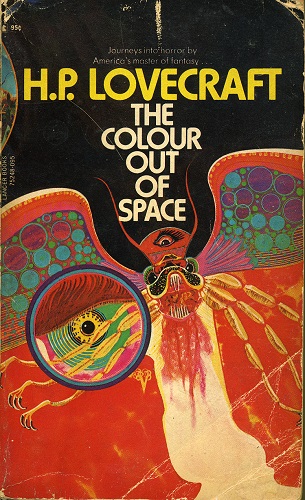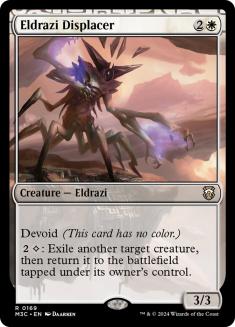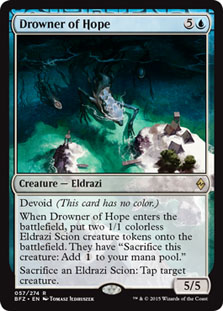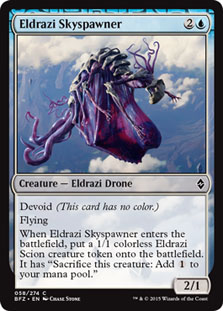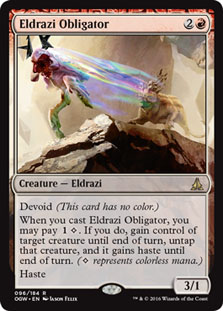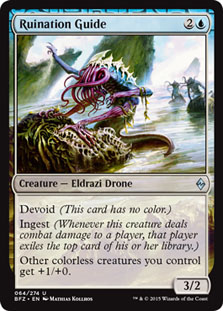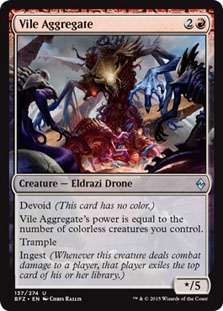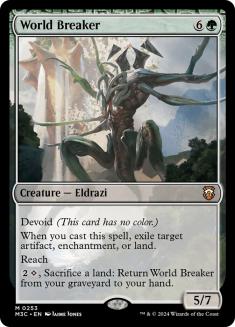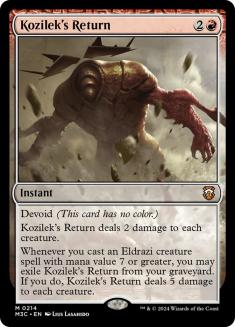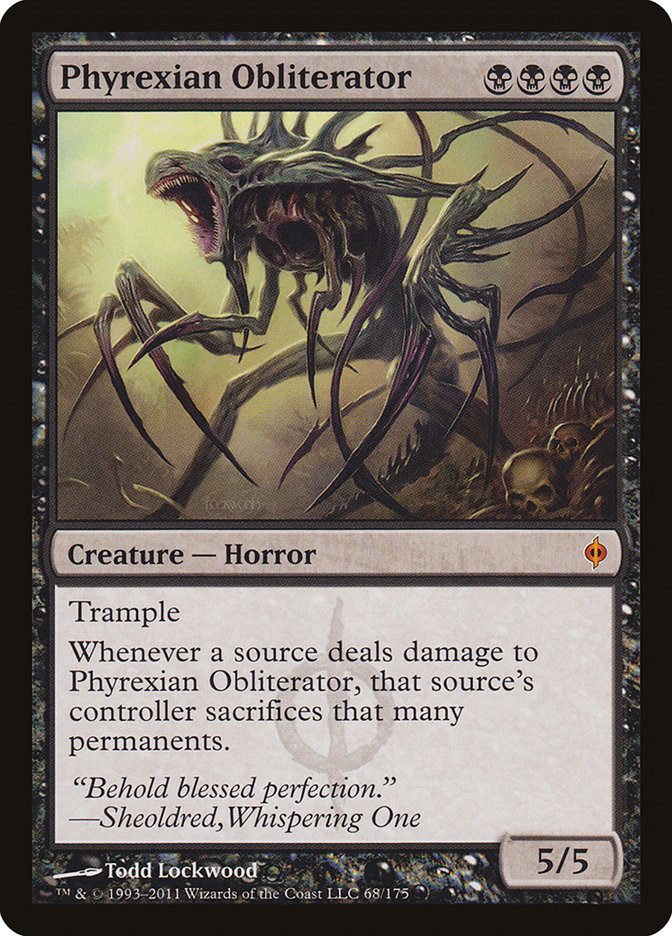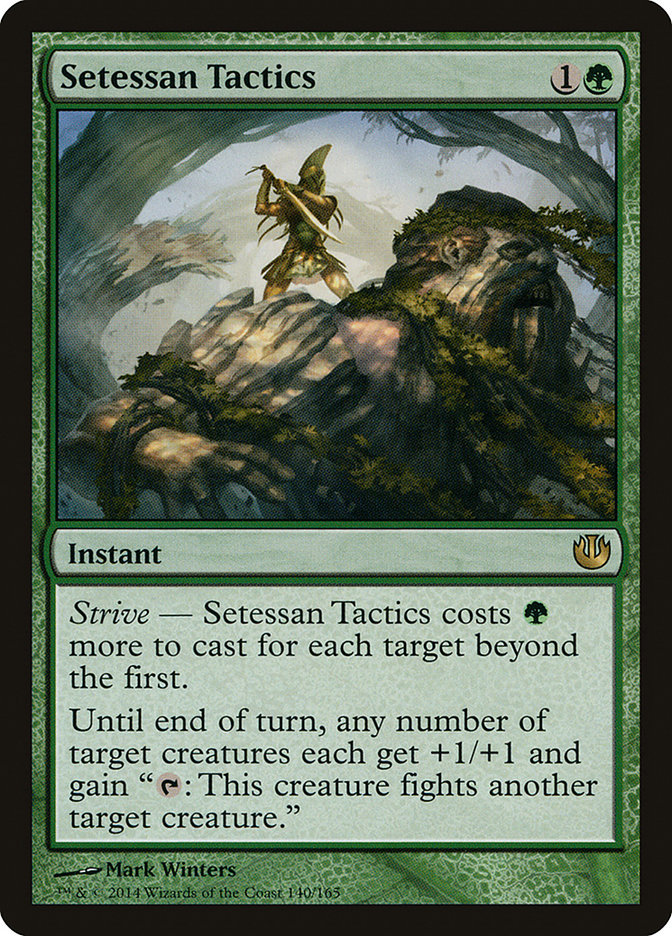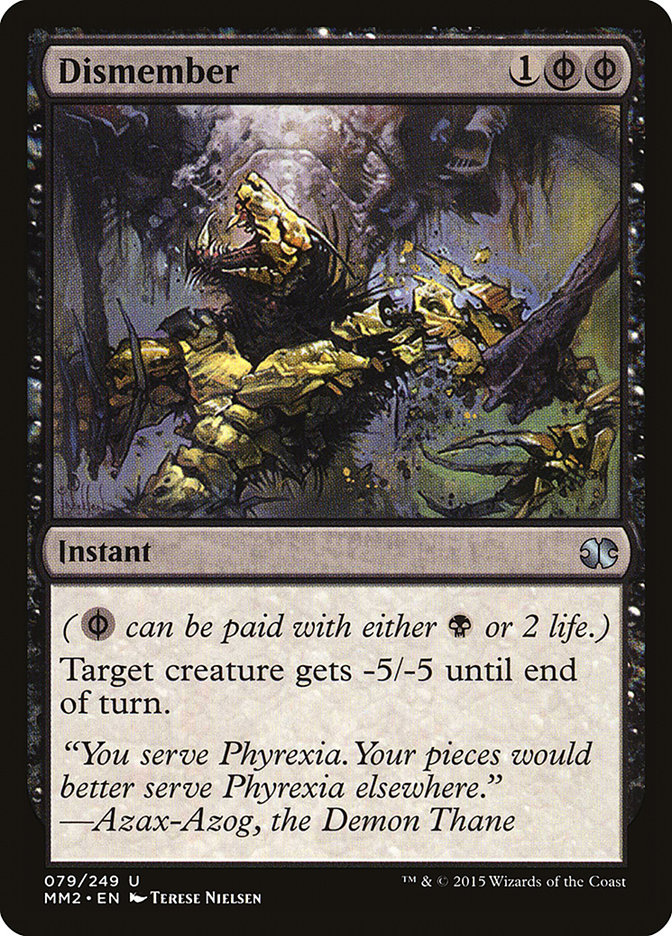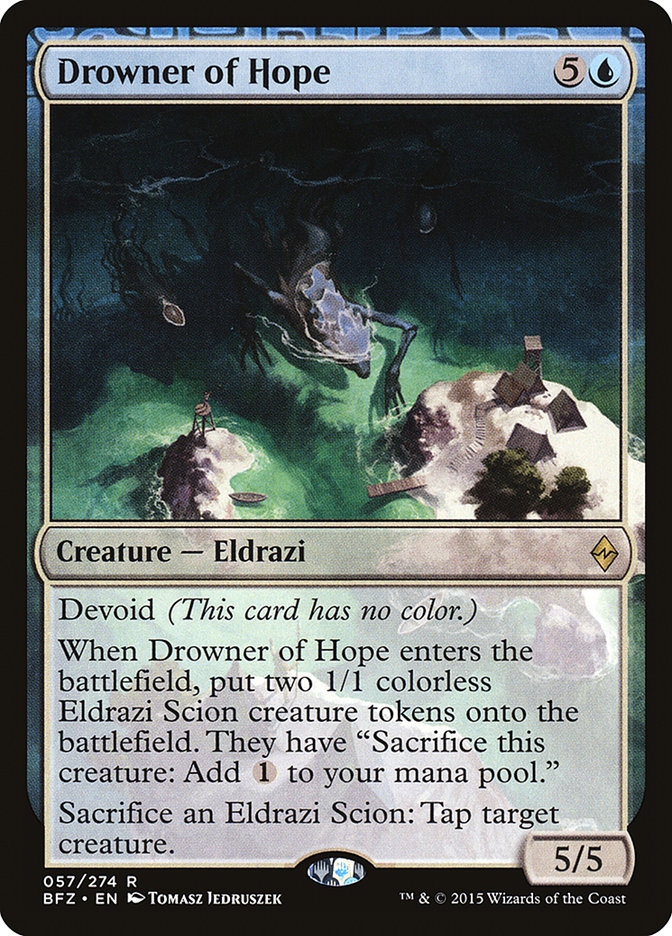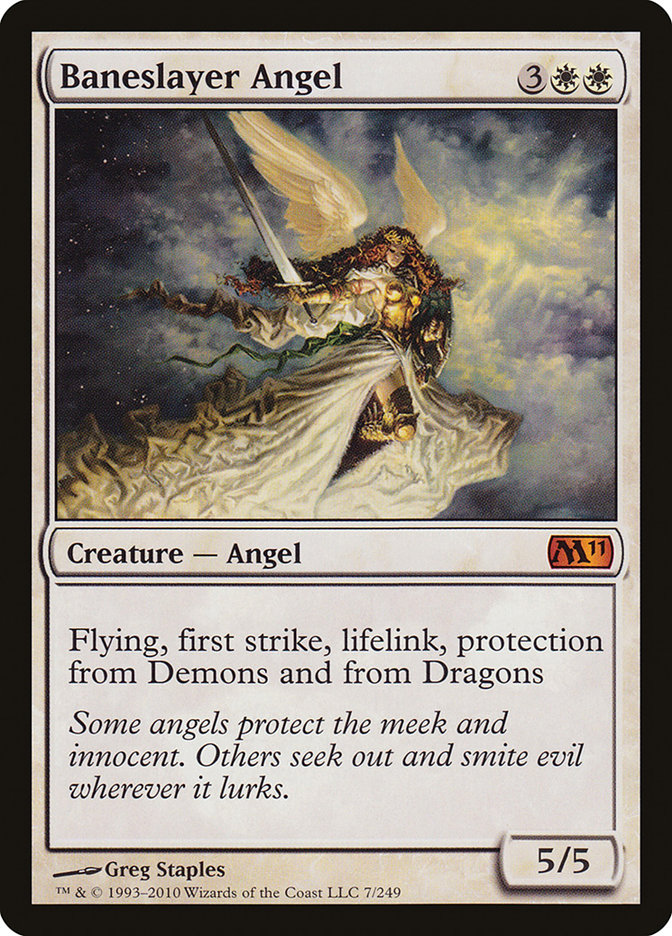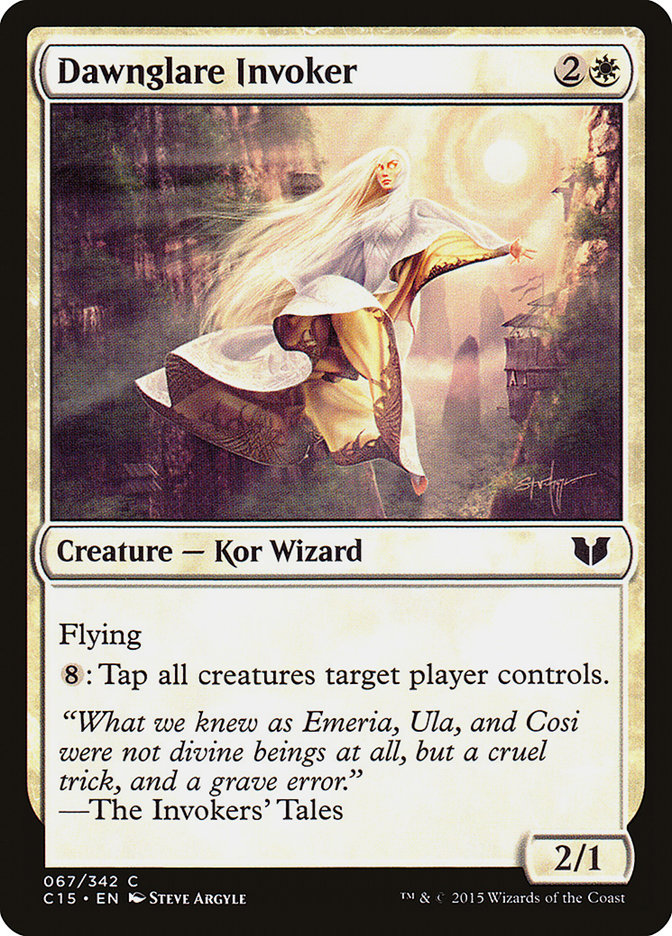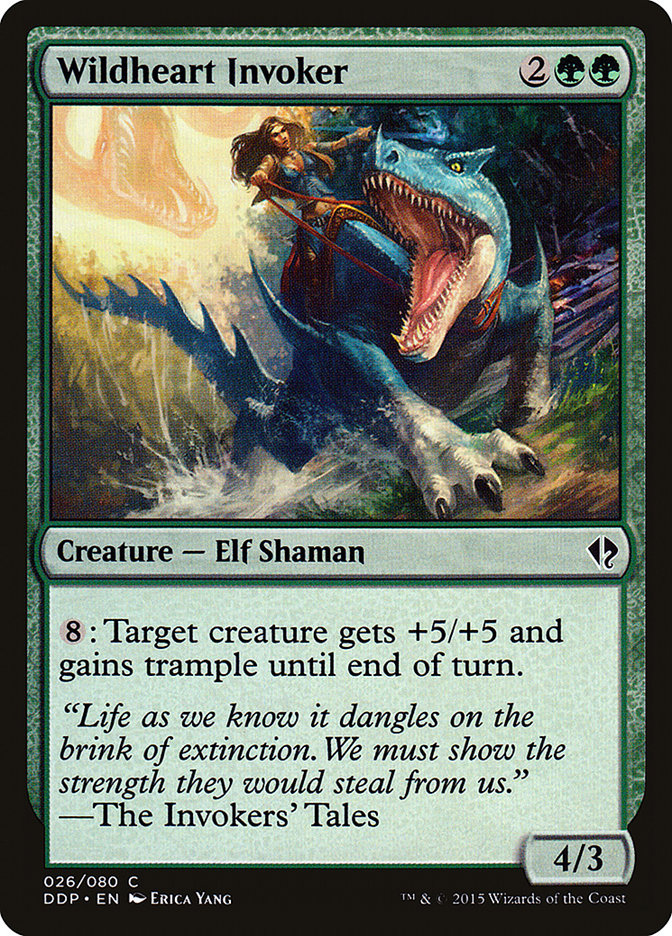 Cthulhu mythos in our imagination and our collective zeitgeist is big enough that even when you aren’t fully aware of the meaning of the mythos, you can still identify it in our Western culture.
Cthulhu mythos in our imagination and our collective zeitgeist is big enough that even when you aren’t fully aware of the meaning of the mythos, you can still identify it in our Western culture.
There it is, out of the corner of your eye: something you can’t quite see, but something that gives you a profound sense of unease. You look directly towards it for that first time, and nothing is out of order. You just have that memory of a sense of unease.
The order of the universe is simply out of place.
It was H.P. Lovecraft who really got the ball rolling, and really popularized the idea. As a Magic player, I find it really ironic that one of his first examinations of the Cthulhu mythos was this:
In the story, the source of the sense of dread is that something is terribly wrong, but the only true evidence of it is that color itself is perverted and made wrong.
When I recalled the tale, it suddenly just felt so familiar, so wrong, I couldn’t help but think of something…
As I prepare for Grand Prix Detroit, I have to decide what to play. When you reflect on the format of Modern, it is hard not to be struck by what is happening. Last week, I said that Modern was not in the same bind as it was during Combo Winter.
I still believe that.
Having played the format a lot more, I think this is much closer to Necro Summer.
See if this sounds familiar:
I wrote that in my article “Rogue Advocacy for U.S. Nationals” about five years ago. What we’re in, right now, is a similar location in Magic: a Closed Metagame.
When you’re looking at your options with regards to deck choice, sometimes there are a ton of options, and sometimes there aren’t. Barring going rogue and finding a niche deck that happens to attack the metagame absolutely perfectly, the Closed Metagame is distinguished by its lack of reasonable alternatives. That rogue deck might actually be a great choice (and heaven knows I’ve made that choice a number of times), but it doesn’t change the fact that the metagame offers only the smallest number of options for a baseline powerful deck.
In the Open Metagame, even if it is as small as the much-bemoaned “Rock-Paper-Scissors Metagame,” there is still a greater or lesser degree of reasonable options, and you can further weigh your own particular set of skills to the task. Further, many formats are much closer to “Rock-Paper-Scissors-Lizard-Spock” than they are to a simple RPS.
But the Closed Metagame makes special demands on us. It demands, “Gee, why aren’t you playing Faeries again?” And you’d better have a good answer. (Good answers do exist.)
So what do you do when a Metagame is Closed?
This is something I addressed in that article I mentioned above:
“In Closed Formats your energy is usually best spent in three ways:
a) Experience: Learn the few top tier decks and how they interact so well that you know them completely. […]
b) Tech: Try to find novel sideboard cards (or occasional maindeck slots) that improve enough of your matchups that you have an edge. Be wary of watering down the explicit strength of the deck by doing so however.
c) Go Rogue: Work on an alternate deck or a foil deck but paying strict attention to the top tier only. Note this is almost always simultaneously the most work and the least fruitful option if winning is your goal.”
So I’ve definitely been trying C, above.
And it hasn’t been working out.
One of the first things I thought as I looked at this format was getting some inspiration from a deck that did reasonably well at Louisville that had more than a little color:
Creatures (14)
- 4 Dark Confidant
- 4 Tarmogoyf
- 3 Scavenging Ooze
- 1 Tasigur, the Golden Fang
- 1 Pia and Kiran Nalaar
- 1 Kalitas, Traitor of Ghet
Planeswalkers (4)
Lands (24)
Spells (18)

Perhaps, I thought, there was room for a plain ol’ midrange deck to work, if only it had enough of the right tools!
Me being me, it was inevitable that I’d think about my own take on the deck, a version that I’ve gone to Top 64 with in numerous Grand Prix:
Creatures (18)
Lands (24)
Spells (18)

This specific deck was designed to fight that Treasure Cruise moment of Modern, with extra juice in fighting Birthing Pod.
It seemed right and just to be bringing this horror to fight colorless horrors:
Phyrexian Obliterator is just an absurd monster when it comes to fighting other absurd monsters. And, then, of course, there is the “cute” combo that steals games with its ridiculousness:
I know from experience that this combo is so absurd that it can boggle the imagination.
It is also work to pull off.
I spent all night working on the specific card list, and got to this point with some real joy in my step as I walked down the street, and a smile on my face when I fell asleep.
Then, the next day, I had to wake up.
Creatures (17)
- 4 Dark Confidant
- 4 Tarmogoyf
- 2 Lotus Cobra
- 4 Phyrexian Obliterator
- 2 Scavenging Ooze
- 1 Courser of Kruphix
Planeswalkers (4)
Lands (24)
Spells (15)

The deck is a good deck.
But this is not a time for good decks. This is a time for unfairness and utter cruelty.
It was all well and good in theory. I even won a few games.
But ultimately, even with all of the discard, even with the many weapons designed to aim the deck towards the Eldrazi, what it boiled down to was this: if Phyrexian Obliterator wasn’t untapped and on the battlefield, I was just playing a fair midrange deck against the Eldrazi. Getting Phyrexian Obliterator on the battlefield would happen, but it had to fight against a lot:
Ultimately, a deck that can win isn’t the same as a deck that wins.
In testing, I kept finding the same thing happening: I’d play a potent card intending to hold the ground with it, and it would get wrecked.
I’d drop Blood Moon, and this would give my opponent with Eye of Ugin and Eldrazi Temple the mana to cast Ratchet Bomb and wreck my world. I’d establish a battlefield, and they’d cast All Is Dust.
I’d drop a Baneslayer Angel and it would just get nuked.
So, now might just be the time to recognize that this is a Closed Format. So let’s all bow to the grand trailblazer for a second:
Creatures (28)
- 4 Drowner of Hope
- 4 Endless One
- 4 Eldrazi Skyspawner
- 4 Eldrazi Mimic
- 4 Eldrazi Displacer
- 4 Reality Smasher
- 4 Thought-Knot Seer
Lands (25)
Spells (7)
Sideboard

Wow, do I like this deck.
That being said, I have a minor few changes I know I’m making.
Creatures (28)
- 4 Drowner of Hope
- 4 Endless One
- 4 Eldrazi Skyspawner
- 4 Eldrazi Mimic
- 4 Eldrazi Displacer
- 4 Reality Smasher
- 4 Thought-Knot Seer
Lands (25)
Spells (7)
Sideboard

Did you see the difference?
Not so much?
Well, right now I’m at 73 of 75 of Tenjum’s list, just putting a fetchable black source of mana into the deck in the form of Godless Shrine, and copying Kent Ketter with a Vesuva in the sideboard.
Boom.
Crazy changes, right?
Well, candidly, Andrew Tenjum knocked it out of the park with this deck. It’s a damn shame he didn’t qualify for the Pro Tour with it.
It’s possible I’ll end up making some other small nudge with the deck, but right now, I have to say, this deck is just incredible.
I guess I’m unsleeving my Baneslayer Angels, my Phyrexian Obliterators.
Goodbye, color.
I’m working on a lot of decks. I may just end up on either Andrew Tenjum’s U/W Eldrazi (A), a different brand of Eldrazi (B), or something wild (C).

